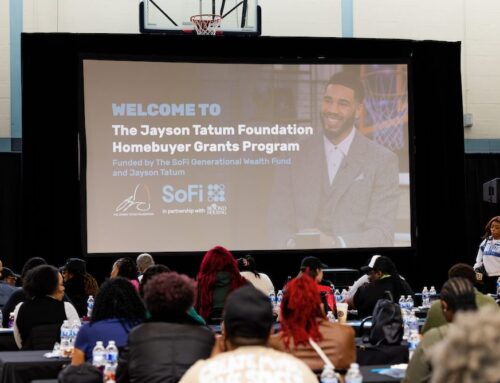After a break of over two years, borrowers will restart federal student loan payments in January 2023. Before the new year arrives, it might be wise for borrowers to have a strategy for repayment.
In March 2020, as the Covid-19 pandemic struck, the federal government ordered the suspension of payments, interest, and collections on most federally held student loans. The most recent extension of the moratorium for more than 40 million borrowers takes it through December 31, 2022.
Some 20 million federal student loan borrowers apparently won’t have to worry about repayments anymore. That’s because President Joe Biden’s administration has announced $20,000 in debt forgiveness for individuals with annual incomes below $125,000 who received a Pell Grant in college. (The annual income cutoff is $250,000 for married couples or heads of households.)
Other federal student loan borrowers who did not receive a Pell Grant in college will receive $10,000 in student debt forgiveness if their individual incomes fall below $125,000. (The cutoff for $10k debt relief is also $250,000 for married couples or heads of households.)
The U.S. Department of Education argues it has the legal authority to implement debt cancellation under the Higher Education Relief Opportunities for Students Act of 2003, also known as the HEROES Act. The Biden administration’s debt relief plan, however, may face legal challenges in federal court.
“Legal challenges are expected,” according to The New York Times’ reporting. The threat of legal action means it’s unclear whether the courts will uphold or overturn the Biden administration’s broad student loan forgiveness plan.
If the debt forgiveness edict goes forward as planned, most eligible borrowers may have to provide the Department of Education with income information to claim the relief. The department said it has income data on nearly 8 million borrowers who may automatically receive the forgiveness without lifting a finger.
Getting $10k or $20k in federal student loan forgiveness will either eliminate your federal student loan debt balance or reduce the amount of principal you owe. The White House may announce more details in the coming weeks on exactly how the program will work in practice.
Loan Repayment Transition
The student loan repayment transition may not be easy for some borrowers. A survey conducted for Pew Charitable Trusts in 2021 found that 67% of borrowers said it would be difficult to afford their student loan payments if they resumed the next month. And about half weren’t aware of when they would be required to resume payments.
Below are some tips on how to prepare for the end of the student loan payment pause:
Update Contact Info and Prepare for Your Bills
To prevent any delays and smooth out the process, make sure your contact information is up to date in your profile on your loan servicer’s website and your Federal Student Aid account.
Once the pause is over, expect a billing statement from your loan servicer. You will get the stats on your due date, interest, and payment amount. If you participate in autopay, make sure that is set up with your latest bank info.
If you have questions that can’t be answered online, you may call the Federal Student Aid Information Center at 800-4-FED-AID (800-433-3243).
Find the Best Plan for Your Income
Apart from the hardships caused by Covid-19, the federal government has made exceptions and provisions for borrowers in recent years. You may want to see if you qualify for any of the programs.
The Department of Education offers income-based repayment, which also considers family size (both factors must be recertified every year).
Almost all federal student loans are eligible for at least one of the four repayment plans:
• Pay As You Earn
• Revised Pay As You Earn
• Income-Based Repayment Plan
• Income-Contingent Repayment Plan
For the first three plans, payments are generally 10% percent of your discretionary income. The plans stretch payments over 20 or 25 years and forgive any remaining balance. (Anyone enrolled in a plan and the Public Service Loan Forgiveness Program may qualify for forgiveness of any remaining balance after just 10 years of payments while working full time for a qualifying employer.)
If you are already in an income-driven repayment plan but your income changed recently, you can update your information to see if you can get a new, lower payment amount.
Explore Other Federal Programs
Do you work for a nonprofit? Is your job in the public sector? Borrowers who are part of the Public Service Loan Forgiveness Program are to receive credit for suspended payments if they have a federal Direct Loan and work a minimum 30-hour week for a qualifying employer.
Teacher Loan Forgiveness is another federal program that can provide eligible educators with up to $17,500 in federal student loan forgiveness.
Restart Payments Early
Some borrowers in a position to resume student loan payments have already done so, or continued to make monthly payments even though it wasn’t required. This move allowed them to take advantage of 0% interest and likely pay down the principal on their student loans.
It’s not too late to take action. If you decide to resume payments before Jan. 1, 2023, contact your loan servicer or go to its website to restart payments. It may also be a good idea to ensure that any payments made during the relief period are going to the principal of the loan.
Consider Consolidating Loans
Consolidation allows borrowers with more than one federal student loan to combine them into a single loan with a fixed interest rate that is the average of the rates of the loans being consolidated (rounded up to the nearest one-eighth of a percentage point).
Borrowers may see a change in monthly payments when they consolidate their loans into a Direct Consolidation Loan, but one of the biggest benefits is convenience. Instead of multiple loans to track each month and multiple payments, there is one payment a month, at a fixed interest rate.
The loan term also may be elongated, to up to 30 years, but a longer term generally means making more payments and paying more in interest than would be the case if you hadn’t consolidated. It’s important for borrowers to consider the length and interest paid over time, as well as the monthly payment, to assess whether consolidation makes sense for their financial goals.
Explore Student Loan Refinancing
If you refinance your student loans with a private lender, a new, private loan — ideally with a lower rate — will pay off your original loans. Refinancing may be right for you if you can lock in a lower interest rate.
One important thing to note is that refinancing federal student loans means the loans are no longer subject to federal benefits like income-driven repayment, Public Service Loan Forgiveness, or federal forbearance.
Also, it’s important to read the fine print and compare offers among lenders.
Comparing options, plugging in numbers, and weighing different scenarios based on your current financial picture and your goals may be helpful in assessing whether refinancing is a good option for you.
The Takeaway
The Biden administration’s plan to forgive up to $20k of a borrower’s federal student debt would still leave some borrowers with a sizable loan balance. Understanding the repayment options available can help borrowers strategize to handle their debt when the federal payment and interest pause ends.
Is the chance at a lower interest rate intriguing? SoFi refinances private and federal student loans with low fixed or variable rates, flexible terms, and no fees. Members get access to local networking events, our online community, and more — at no additional cost.
Check your rate on student loan refinancing today.
SoFi Student Loan Refinance
IF YOU ARE LOOKING TO REFINANCE FEDERAL STUDENT LOANS, PLEASE BE AWARE OF RECENT LEGISLATIVE CHANGES THAT HAVE SUSPENDED ALL FEDERAL STUDENT LOAN PAYMENTS AND WAIVED INTEREST CHARGES ON FEDERALLY HELD LOANS UNTIL DECEMBER 31, 2022 DUE TO COVID-19. PLEASE CAREFULLY CONSIDER THESE CHANGES BEFORE REFINANCING FEDERALLY HELD LOANS WITH SOFI, SINCE IN DOING SO YOU WILL NO LONGER QUALIFY FOR THE FEDERAL LOAN PAYMENT SUSPENSION, INTEREST WAIVER, OR ANY OTHER CURRENT OR FUTURE BENEFITS APPLICABLE TO FEDERAL LOANS. CLICK HERE FOR MORE INFORMATION.
Notice: SoFi refinance loans are private loans and do not have the same repayment options that the federal loan program offers such as Income-Driven Repayment plans, including Income-Contingent Repayment or PAYE. SoFi always recommends that you consult a qualified financial advisor to discuss what is best for your unique situation.
In our efforts to bring you the latest updates on things that might impact your financial life, we may occasionally enter the political fray, covering candidates, bills, laws and more.
Please note: SoFi does not endorse or take official positions on any candidates and the bills they may be sponsoring or proposing. We may occasionally support legislation that we believe would be beneficial to our members, and will make sure to call it out when we do. Our reporting otherwise is for informational purposes only, and shouldn’t be construed as an endorsement.
External Websites: The information and analysis provided through hyperlinks to third-party websites, while believed to be accurate, cannot be guaranteed by SoFi. Links are provided for informational purposes and should not be viewed as an endorsement.
Financial Tips & Strategies: The tips provided on this website are of a general nature and do not take into account your specific objectives, financial situation, and needs. You should always consider their appropriateness given your own circumstances.
SOSL20051
The post How to Prepare for the End of Federal Student Loan Relief appeared first on SoFi.





Leave A Comment